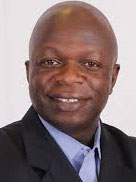 The ‘Freedom Riders’ of Australia
The ‘Freedom Riders’ of Australia
By Lekan Oguntoyinbo, NNPA Columnist
One day in late February 1965, an interracial group of 29 university students rode into a small, segregated town looking to make trouble. For in this community, people of color were served last at stores, forced to sit in the front row at theaters and forbidden to swim in public pools or try on apparel at clothing stores.
Their bus voyage was part of a two-week campaign against racism and legal discrimination. The students named their group the “Freedom Riders.” When they arrived in this town, they invited children of different races to swim with them in the public pool – to the great dismay of local white residents.
Days earlier, the students had been run out of another town for protesting outside a club for ex-servicemen that denied membership to veterans of color. Whites pelted them with eggs, shouted insults and fought with them. At least one of the Freedom Riders was knocked to the ground.
These events might sound reminiscent of the 1960 Freedom Riders who desegregated interstate buses in the Deep South, but they actually took place nearly 10,000 miles away in Australia – a nation with a long history of racism and pernicious violence against the dark-skinned indigenous people who’d lived there for more than 40,000 years before Europeans arrived in the late 1700s.
For more than 150 years, European settlers displaced and murdered aborigines and destroyed their communities, often through government-sanctioned policies. Throughout much of the early 20th Century, indigenous children were forcibly taken from their parents and sent to live with White families, foster homes or boarding schools designed to culturally assimilate them. Many others were forced to live on reservations.
Like Blacks in America, indigenous people were treated as second-class citizens and had limited access to quality housing, jobs and a good education. Before the late 1960s, indigenous people did not have the right to vote and were not even included in the census.
During the middle 1960s, student activists at the University of Sydney – one of Australia’s most prominent higher education institutions – decided to challenge the status quo. Inspired the Student Nonviolent Coordinating Committee (SNCC) and the Congress of Racial Equality (CORE) – and the interracial group of Freedom Riders who risked their lives to defy Jim Crow laws in the Deep South – the students decided to import this form of civil disobedience popularized around the globe by American civil rights activists into Australia. The University of Sydney student activists’ two-week “freedom ride” gained considerable attention and marked a major turning in race relations in Australia.
Historians say it led to a “yes” vote in a 1967 referendum about whether to include native Australians in the census count. It also raised awareness about racism Down Under and forced the government to take steps to integrate Aborigines into mainstream Australian society, increase access to opportunities and eliminate legal racial discrimination. Of course, the Freedom Rides and the referendum were not a panacea for Australia’s racial problems.
Like Blacks in America, indigenous Australians continue to grapple with the legacy of centuries of racism and oppression. Infant mortality is two and a half times higher among Aborigines. Their unemployment rate is three times higher than that of the general population, they are less likely to complete their schooling, and they comprise 20 percent of the prison population, even though they are less than 5 percent of the population.
But Australia is a nation that is considerably more enlightened about race than it was half a century ago and indigenous people have the same rights as the general population – at least on paper.
Starting this week, much more attention will be focused on the bravery of the “Bloody Sunday” marchers who 50 years ago attempted to trek from Selma to Montgomery, Ala. to protest laws that denied blacks the right to vote. And that is as it should be.
But in celebrating the landmark accomplishments of the marchers in Alabama, this also is an appropriate time to reflect on the impact of the Civil Rights Movement – not just in the United States, but around the world.
This is an appropriate time to reflect on the hope that activists inspired among oppressed racial, ethnic and religious minorities around the world, including Catholics in Northern Ireland, Blacks in Rhodesia, Dalits in India, people of color in South Africa and indigenous people in Australia.
Around the world, much is made of America’s “founding fathers,” a group made up largely of slave owners who balked at entrusting democracy to the masses and who believed voting rights should be the exclusive preserve of property-owning White males.
Maybe we ought to consider spending more time paying homage to the men and women who in the last 60 years pushed America to live up the letter of its constitution – and, in so doing, inspired and helped change the rest of the world.
